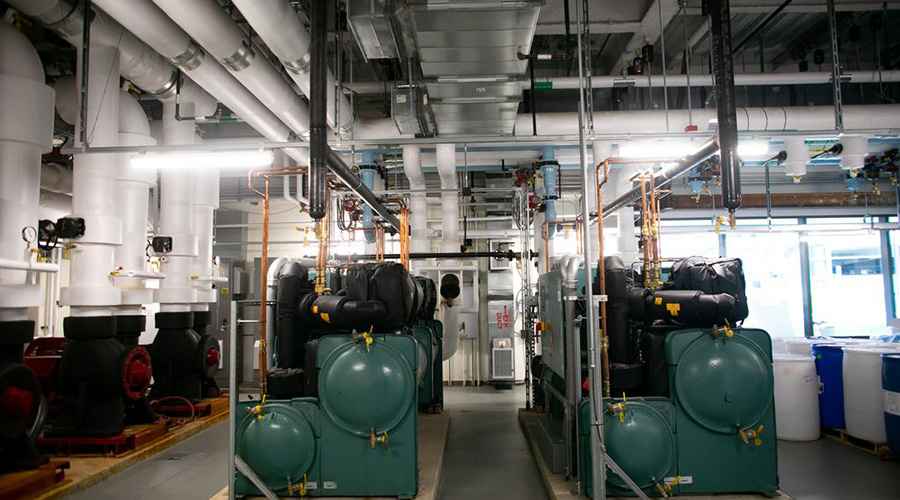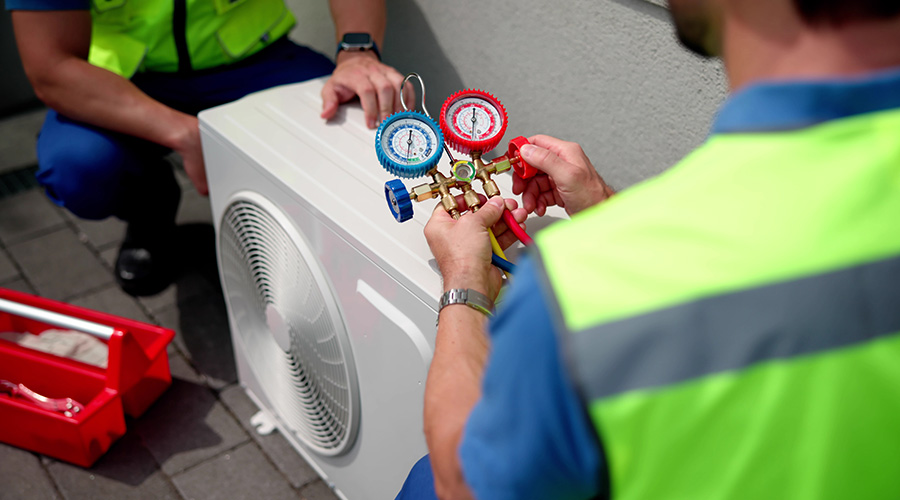Healthcare facilities use large amounts of energy. Hospitals rank third by building type in terms of energy use behind food service and grocery stores. Although hospitals make up only a small fraction of all healthcare buildings, they represent an outsized portion of the sector’s total electricity and natural gas consumption.
This situation offers a sobering reality about the healthcare sector: Its mission is to deliver high-quality, patient-centered care to all individuals, but the buildings in which that care is delivered can be agents of health-averse climate change.
Climate change presents an existential health risk to humankind. According to the Centers for Disease Control and Prevention, the health effects of various planetary disruptions brought on by climate change include increased respiratory and cardiovascular disease, injuries and premature deaths related to extreme weather events, changes in the prevalence and geographical distribution of food- and water-borne illnesses, and threats to mental health.
The healthcare industry must reduce its energy use and carbon emissions soon for the sake of the long-term health of its patients and the planet. Considering the industry’s outsized impact, making these reductions is no easy task.
When accounting for rising energy costs as federal funding changes threaten the ability of many smaller and rural hospitals to simply remain open, healthcare facilities managers have difficult decisions to make.
The issue requires an exploration of the nuances of those decisions, as well as design and mechanical interventions that can lead to energy, emissions and cost savings that do not compromise levels of care. A case study of MetroHealth Glick Center in Cleveland illustrates the way contextual and nuanced decision-making has delivered net benefits for the hospital and its community.
Decarbonization vs. electrification
Comprehensive decarbonization plans must look at all energy sources and end uses, but when healthcare systems seek to reduce their carbon footprint, often the biggest challenge and opportunity is the heating system. When evaluating heating system replacement, decarbonization and electrification are not always interchangeable, nor are they always mutually exclusive. Often, it is a question of where the power comes from, how it is generated and what on-site mechanical systems are channeling that power for patient care.
Hospital facility managers must consider certain variables, including geographical location and local rate structures, to understand the tradeoffs of electrification as a decarbonization strategy.
For example, in California and Upstate New York — two states that rank very low in carbon dioxide emissions per electricity generated thanks to abundant renewables — plugging in a 100 percent efficient electric boiler for a 75 percent efficient gas boiler will reduce emissions by 10 percent in California and 50 percent in New York. But it also will increase operating costs — 264 percent and 411 percent, respectively. In states with higher average grid emissions, swapping out the same equipment will result in increased costs and emissions per Btu of heat produced.
Related Content: Reducing Energy Demand and Decarbonizing Healthcare Facilities
While many regional electric grids rely more on renewable sources such as solar, wind and hydropower than ever, hospitals will not break even in carbon emissions or operating costs over the lifetime of the new equipment.
It is a foregone conclusion that any measure to save on facility operating costs should not compromise the quality of care. What viable measures can managers implement to enable hospitals to reduce energy use while keeping costs and emissions in check?
How to decarbonize intelligently
When applied correctly, heat pumps and heat recovery chillers can reduce system energy use, operating costs and carbon emissions.
To best understand the benefits of heat recovery chillers (HRC), managers need to understand the measure of coefficient of performance (COP), which is a ratio calculated by dividing the amount of useful heating and/or cooling capacity by energy input. For example, with a 90 percent efficient boiler, for every unit of energy input, the boiler output is 0.9, making that boiler’s COP 0.9. For an HRC serving simultaneous heating and cooling loads, the order of magnitude is far greater.
Unlike standard boilers, HRCs can efficiently service heating and cooling needs at the same time. The chiller reclaims waste heat generated during the cooling process, which can be directed to various uses, including domestic hot water and space heating. With the average HRC, for every unit of energy input, the system outputs 3.5 units of heating and 2.5 units of cooling, giving it a total COP of 6.
For example, in the cold climate of Minnesota, using an HRC in place of a 90 percent efficient gas boiler and high-efficiency chiller will reduce emissions by 71 percent and operating costs by 63 percent per Btu of heating and cooling produced. It is worth noting that these benefits only apply when simultaneous loads are serviced. Still, HRCs work very well in hospitals, since the buildings have comparatively high cooling baseloads, resulting in more recoverable waste heat.
Let’s return to that 3.5 COP value when isolating the HRC’s heating output. During times when an HRC is needed only for producing heat, additional energy reductions are achievable. Full heat recovery engagement can serve as a control strategy for integrating building systems with the HRC to recover more energy through the building’s chilled water system in order to generate useful heat. Full heat recovery engagement can further enhance already efficient operations, while enabling the HRC to do what it does but better.
This approach has been put to the test and yielded tremendous results, with the development of a $767 million, 800,000-square-foot hospital on behalf of MetroHealth.
Case Study: MetroHealth
The 11-story, 312-bed Glick Center is the centerpiece of MetroHealth’s state-of-the-art, hyperefficient medical campus in Cleveland. It operates on the country’s first healthcare-anchored eco district, which includes office buildings and commercial spaces. The Glick Center’s HVAC system can supply 100 percent fresh outdoor air to the building’s four patient floors, and so-called pandemic suites are designed with negative air pressure to contain airborne infections when needed.
The HVAC system is optimized in other ways to keep the facility’s energy consumption to a minimum. The full heat recovery engagement strategy enables the center’s building systems to intuitively switch between two energy-saving modes, recovering heat from exhaust air when outdoor temperatures are moderate and circulating cool outdoor air when temperatures drop. These modes operate in tandem with advanced energy recovery systems that reuse waste heat through an HRC and a smart predictive chiller plant management system.
Since opening in 2022, MetroHealth has seen annual utility cost savings of $483,000, which is an 80 percent reduction in fossil fuel combustion for heating and measurable reductions in overall emissions and energy use intensity.
Not all healthcare systems have the luxury of MetroHealth’s infrastructure. But all healthcare systems share goals of delivering quality care efficiently, serving as paragons of wellbeing for their communities and remaining solvent at a minimum. Achieving all these demands requires implementing measures to reduce costs, reduce emissions and reduce energy use. Fortunately, facilities managers have more than one path to the finish line.
Amy Douma is design principal with HGA, a consulting engineering and architecture firm. Brendan Huss is senior mechanical engineer with the firm.

 Skill Stacking: How Micro-Credentials Are Reshaping Trades
Skill Stacking: How Micro-Credentials Are Reshaping Trades Prima Medicine Opens New Location in Tysons, Virginia
Prima Medicine Opens New Location in Tysons, Virginia Anchorage Neighborhood Health Center Ensnared in Cyberattack
Anchorage Neighborhood Health Center Ensnared in Cyberattack Healthcare Real Estate: Responding to Shifting Patient Demands
Healthcare Real Estate: Responding to Shifting Patient Demands Over 40% of Workers Impacted by Seasonal Depression
Over 40% of Workers Impacted by Seasonal Depression